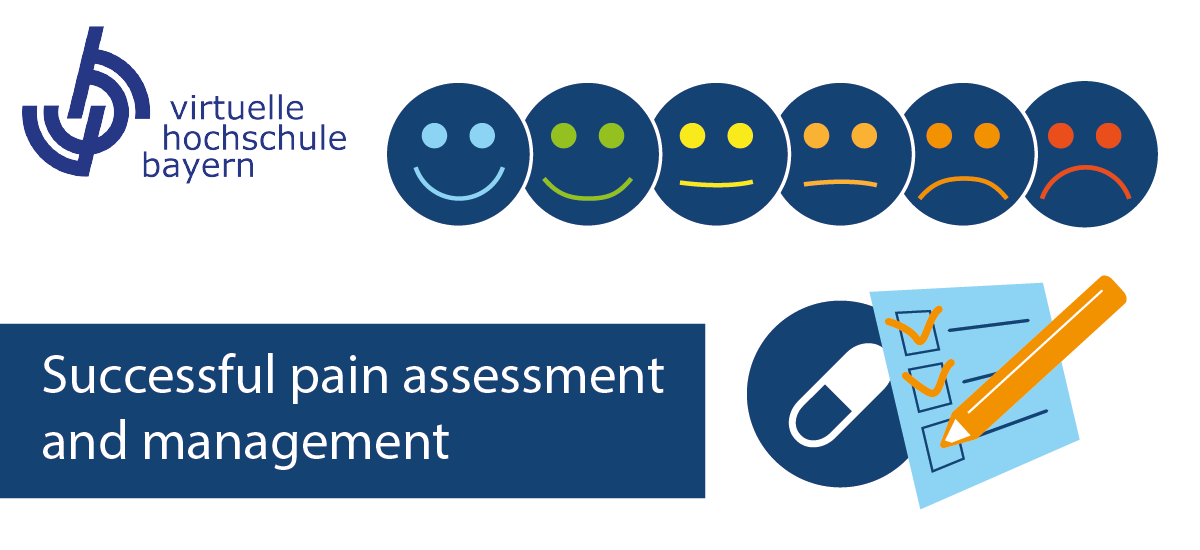Successful pain assessment and management
| Site: | iLearn - Lernmanagementsystem der Hochschule Deggendorf |
| Course: | vhb Demo: English Competence and Research Training for Health Professionals |
| Book: | Successful pain assessment and management |
| Printed by: | Gast |
| Date: | Sunday, 7 December 2025, 3:16 AM |

Page 1
Learning objectives
 RESEARCH SKILLS
RESEARCH SKILLS
You will know the principles of a 'qualitative' study design
You will know the principles of the 'case-control' study design
You will be able to critically appraise a 'qualitative study' and a 'case-control study'
 ENGLISH COMPETENCE
ENGLISH COMPETENCE
You will be able to describe the principles of pain, pain assessment and pain management
You will be able to assess pain in patients
You will improve your English vocabulary on the topic 'pain'
Play audio:
Page 3
Case – Jeannette Bright
You come across some scientific literature while researching how to help the patient. You believe these articles will help you to further understand pain and how to help older patients who may have cognitive problems as well. Many patients you will encounter experience pain.


The first step to helping them is to educate yourself about the components of pain and why we feel it. You may wonder why many of the articles about pain have a qualitative design rather than a quantitative design. This encourages you to do some research on the principles of qualitative studies.

Page 8
Conclusion
Jeannette Bright is ready to leave the hospital. She has learned different strategies to help deal with the pain she suffers from. Your explanations have also helped her understand how her depression can influence her pain in the future.
Your patient has gained greater health competence and feels confident she can deal with pain in the future.

You rock!
Thanks to your knowledge about pain and pain assessment, Jeannette Bright is able to better deal with her pain and know strategies other than medication which can be used to deal with her pain. Great job!
 Play audio:
Play audio:
Page 9
Learning achievements
 RESEARCH SKILLS
RESEARCH SKILLS
You know the principles of the 'qualitative' study design
You know the principles of the 'case-control' study design
You can critically appraise a 'qualitative study' and a 'case-control study'
 ENGLISH COMPETENCE
ENGLISH COMPETENCE
You know the principles of pain, pain assessment and management
You can assess pain in patients
You enhanced your English vocabulary in the area of 'pain'
Play audio: